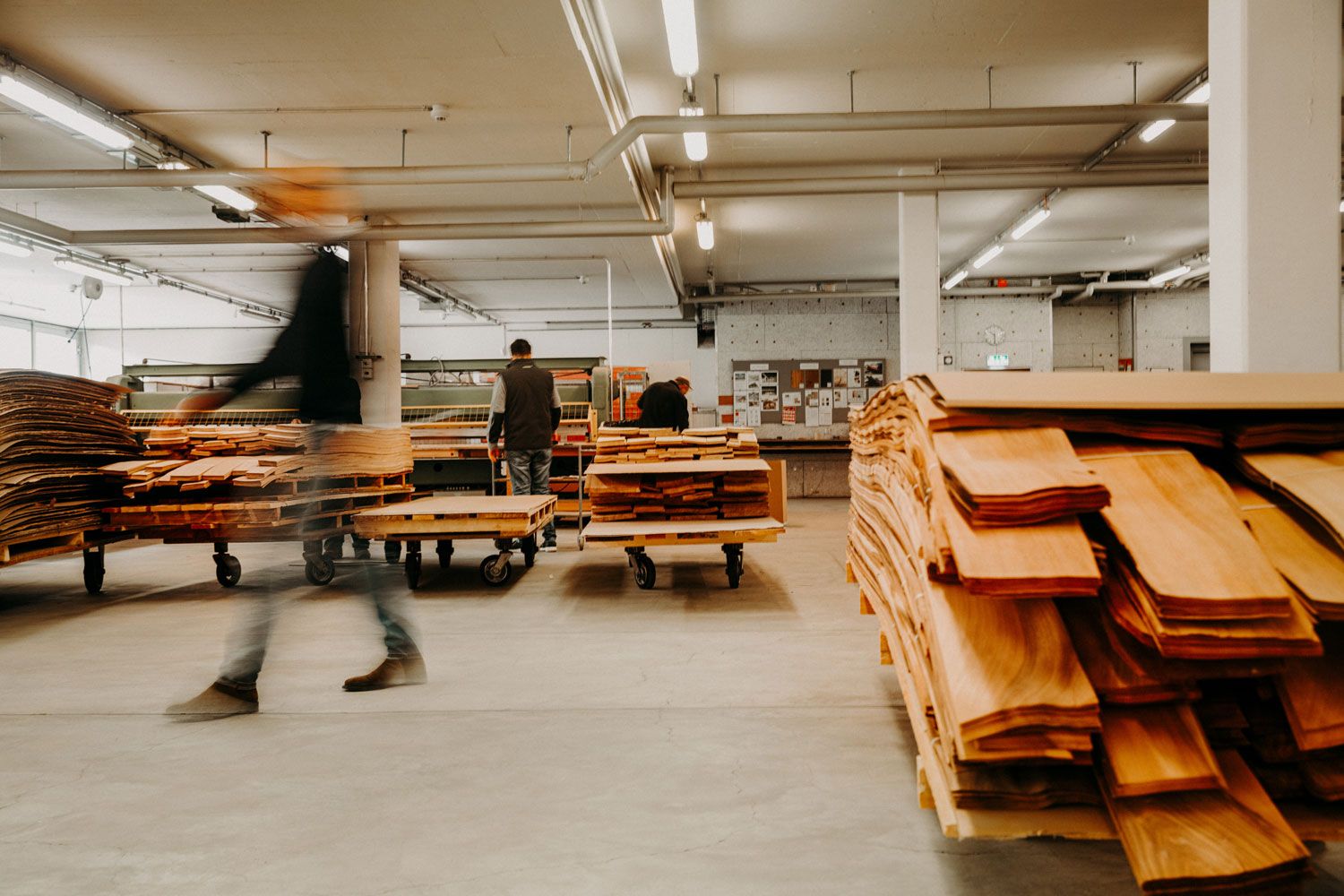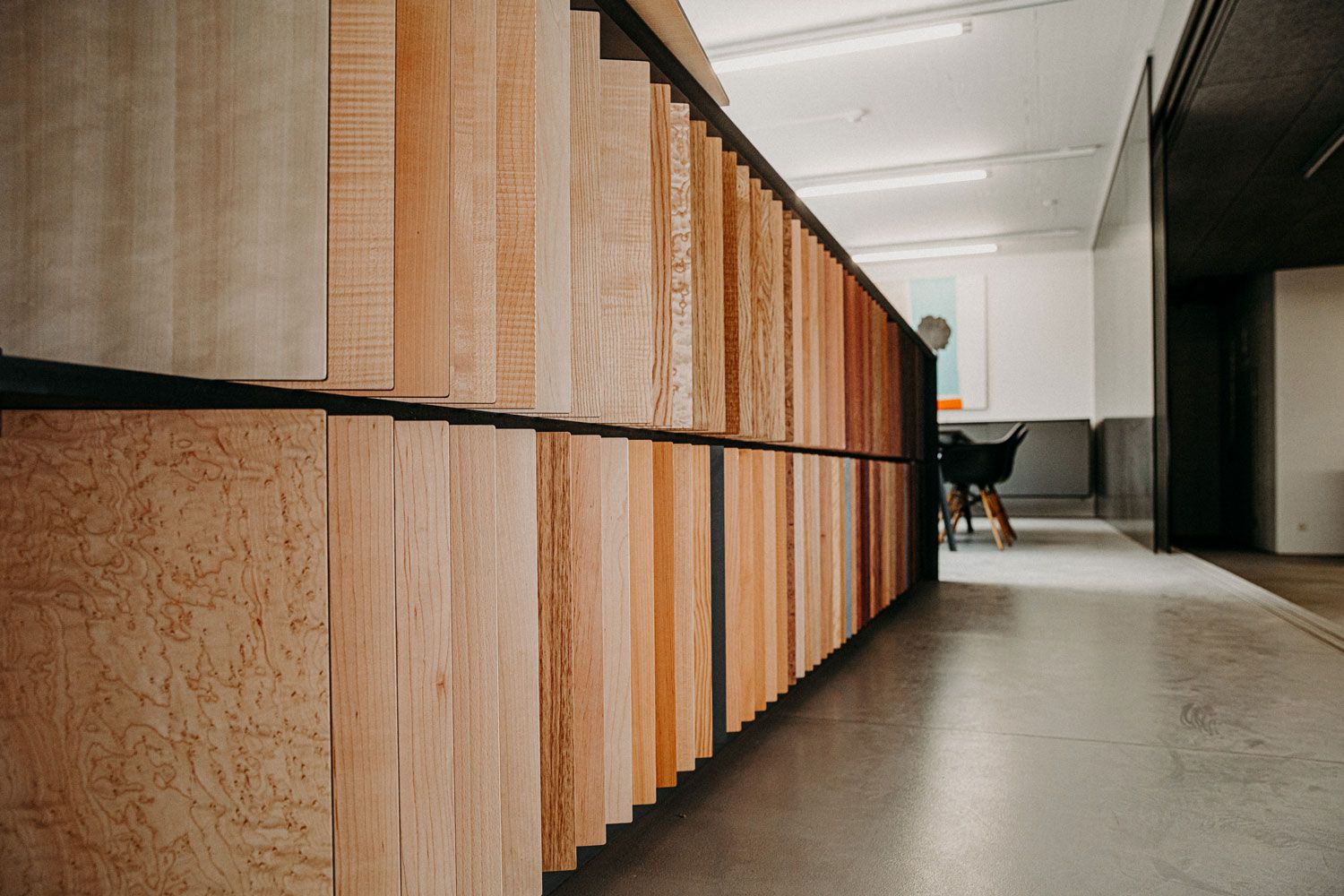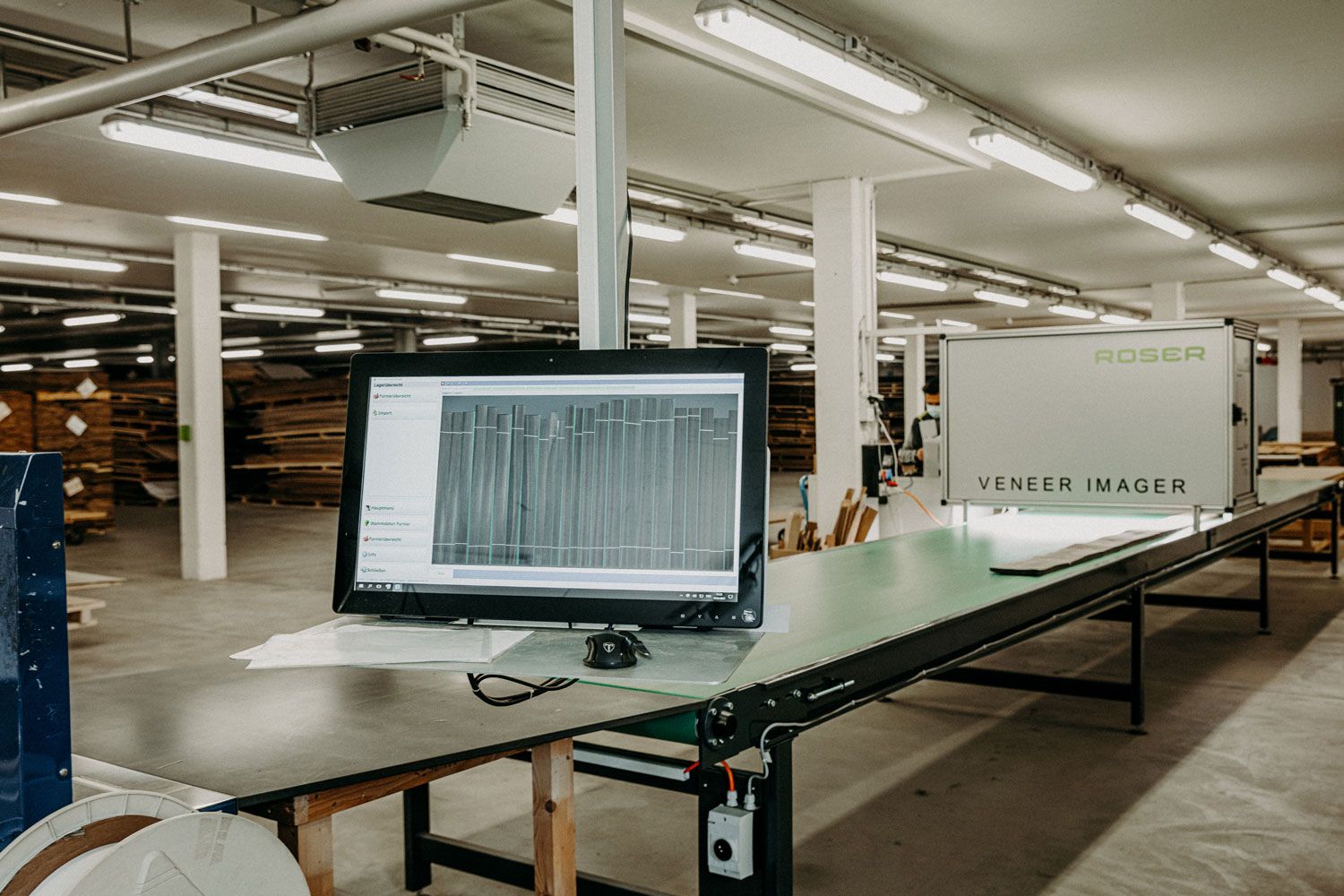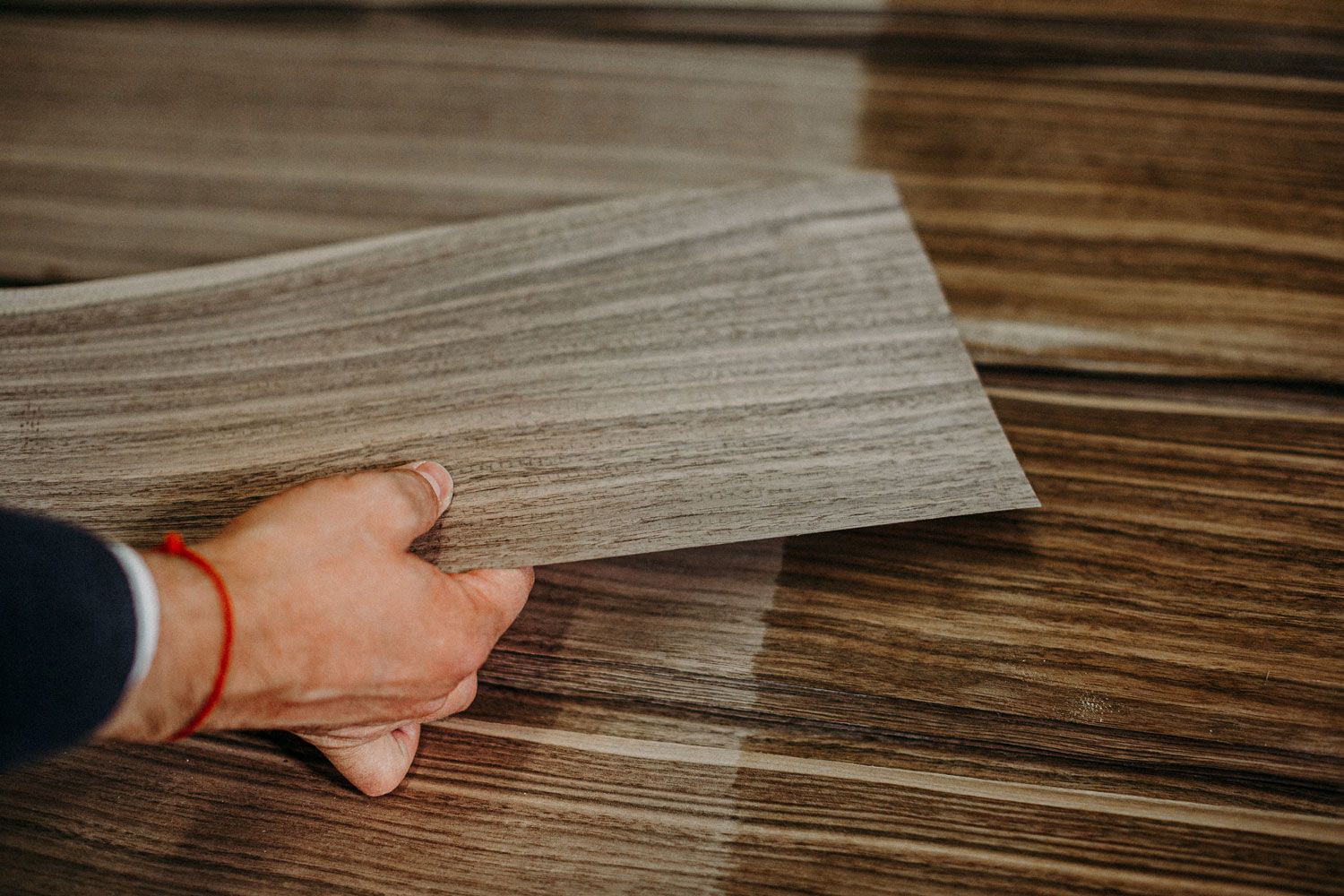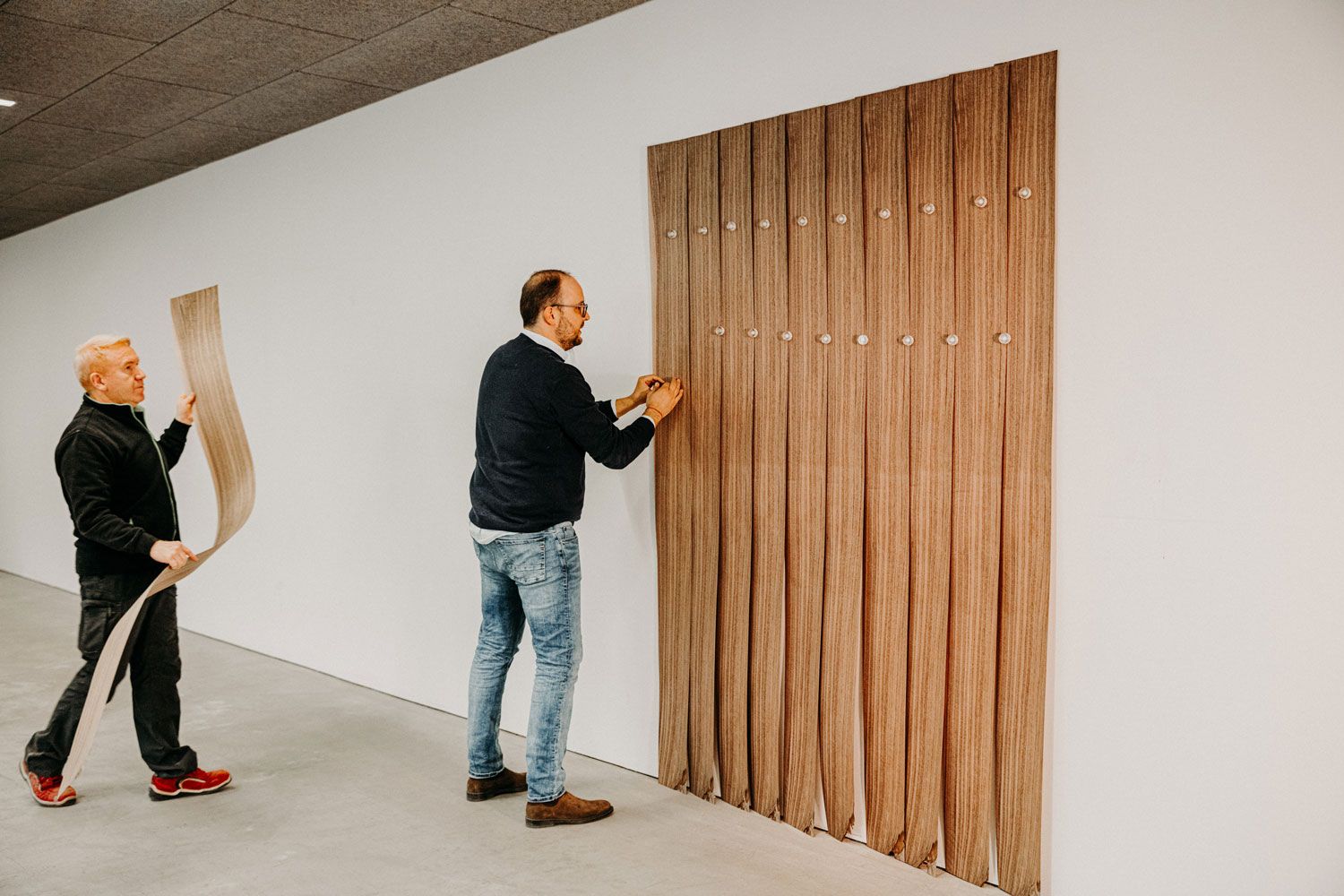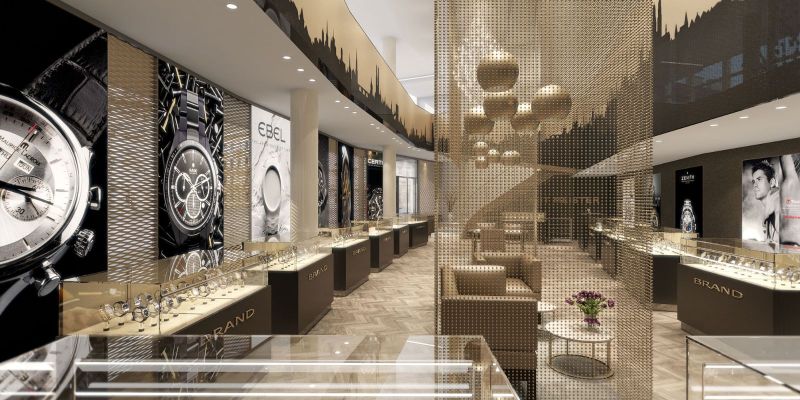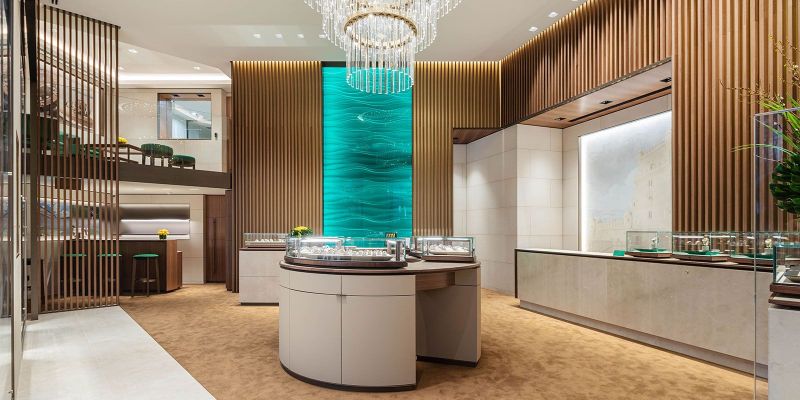30. March 2021
The Search for the Perfect Veneer
In many of our interior architecture projects, we use veneer. However, wood in the quality DOBAS requires is rare. Here, we explain how veneer is made and how we find suitable logs for our work.
A natural product always has its own characteristics – and wood is no exception. Not every log is suitable for processing into veneer. «The basic rule is that only five per cent of the timber felled globally is suitable for veneer production,» says Tobias Scherg, Managing Director of Roser AG in Birsfelden and one of our partners in sourcing veneer for DOBAS projects.
The process begins with the wood hammer
Sourcing veneer-ready logs involves many steps. The process begins with timber harvesting, which takes place during the colder months. Roser AG can always trace where its trees come from and how they were grown. The company is committed to the sustainable and resource-conscious use of wood.
The finest felled logs are then released for auction by forest owners and forestry offices. «My team and I inspect the trees in the forest and discuss their suitability on-site,» explains Tobias Scherg. «Afterwards, if we’re interested, we can place a single secret bid per log.»
Whether a log is suitable for veneer depends on factors such as its appearance. «If there’s even a small branch, it would show as a wood feature on the veneer, preventing a uniform final result,» says the Roser Managing Director. The cylinder must also be completely straight to ensure it can be processed into 0.6-millimetre-thin face veneers. «The wood really has to be perfect.»
Boiling, slicing, and drying
The purchased logs are then sent to a veneer mill. The location of processing depends on where the timber was felled, with the aim of keeping transport distances as short as possible.
At the mill, the logs are debarked, inspected, and sorted. Next, they are placed in a steaming or boiling bath to soften the wood and enhance its colour. The logs are then either sliced or peeled, depending on the technique, which determines the appearance of the veneer. For instance, with quarter slicing, the logs are quartered and sliced perpendicular to the growth rings, resulting in clean and linear veneer sheets. «This ‘extra rift’ veneer quality,» as Scherg calls it, is a type often used by DOBAS. Regardless of the style, we exclusively use FSC-certified wood in our projects, ensuring environmentally sound, socially responsible, and economically viable forestry.
After slicing or peeling, the veneer sheets are dried using a press dryer, where they are sandwiched between two metal belts. Before transport to Roser AG, each log is bundled into packages of 24 sheets. A single log can yield up to 2000 square metres of veneer. «It’s the most economical and ecological product we can produce from wood,» summarises Tobias Scherg.
Digitising, inspecting, and selecting
Around three weeks after the log is collected from the forest, it arrives in Birsfelden as veneer. Scherg and his team then sort the bundles into their own quality grades.
Before DOBAS CEO Patrick Buchecker travels to Birsfelden to inspect potential veneers, he receives a digital preview via email. «Each package passes through the Veneer Imager, where it is photo-optically scanned,» Scherg explains.
On-site, the challenge is to choose. Patrick Buchecker is often accompanied by a carpenter whose expertise in processing is invaluable. Suitable veneer bundles are inspected sheet by sheet, often multiple times. «I usually bring project plans and make notes on where each bundle could be used,» explains the DOBAS CEO.
«Every log is and always will be unique, just like people. That’s what makes this work so exciting,» concludes Tobias Scherg.
Explore More Space Stories
Space Story #9 | 26 November 2020
Virtual Reality for Brand Acquisition
DOBAS employs Virtual Reality (VR) to visualise future retail spaces, among other applications. This technology offers various opportunities and can prove particularly valuable in brand acquisition.
Space Story #7 | 3 September 2020
Implementation of Retail Design Concept in Lisbon
In addition to creating its own designs, DOBAS also implements third-party retail concepts, managing everything from detailed planning to handover. For the specialist retailer Torres Joalheiros, DOBAS realised an impressive boutique on Avenida da Liberdade, Lisbon’s luxury shopping boulevard.

